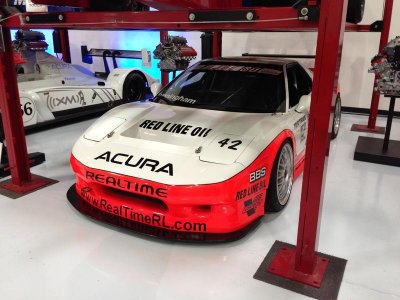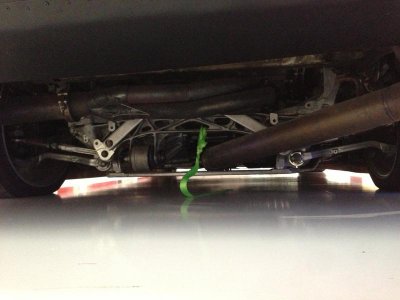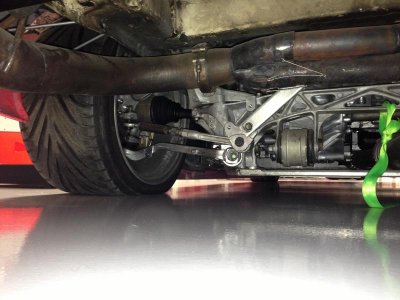Yeah, I don't think anyone that has tried a large bar like that in the rear on an NSX kept it on very long - I'm sure the book Mr. Johnson recommends will mention something about the fact that sway bars - the bigger you go, are DECREASING traction AT THE TIRE from turn-in to exit...that is why so many guys run the large front bar and OEM rear as they don't like the NSX's inherent tendency to rotate sharply on turn-in - they get near the limit on entry speed in a fast corner and as they turn in they're met with a low polar moment of inertia specific to mid engine cars (40/60 weight distribution) and the "ass end hangs out" before they even get back on to the throttle. The other common scenario for the perceived need for a bigger front bar is past turn-in, adding throttle, and your met with wheelspin - power on oversteer in this case. If you make the rear end as compliant as possible, theoretically you will have the most traction at the rear tire and less at the front. I think driving style is a major influence on your choice of sway bar - as in what are you comfortable with, what is just barely manageable, and what is actually faster on the lap timer?
So you can see why theoretically you wouldn't want a larger rear bar? It would take grip away from the rear tires from turn-in to exit which this car does not need. When I bought my car it had Dali streets front and rear (7/8") and I simply did not like the way the car "felt" regardless of hole positions. When I installed a set of 91 OEM bars before my track day last weekend, I noticed on the sway bar bushings it read 18.5mm front and 17.5mm rear, so there is a slight front bias in stiffness right from the factory, mated to an original spring rate bias of about 50lb.s stiffer n the rear on a 91 (I have KW V3's at 347/347lb. currently). My opinion is its a balance issue, fine tuning of the balance, and its going to change maybe a little or a lot depending on different track layouts, tire sizes and compounds, power adders, and constantly adapting to the car as mentioned above. I think its regarded as a "safe" setup for an NSX to have the 1" bar up front and something soft out back as its going to PROMOTE understeer from the moment you turn the steering wheel in.
I'm really comfortable at the moment with the OEM bars and do not plan on switching them. I'm in the process of getting stiffer springs for the KW's and I'm thinking of emulating the 91 spring rate bias of a 50lb stiffer spring in the rear. Springs don't physically take traction away at the tire like a sway bar (maybe if you go to 1000lb.s or something?) they simply change the body roll characteristics which is a product of the weight distribution of the car - where is most of the weight and what effect will that have under braking, turning, and accelerating? There again I have found alot of guys running the harder front spring with the harder front bar - under braking the nose will dive less and under acceleration the tail will squat more theoretically aiding in more compliance from the rear of the car, but go too far and your just going to have wholesale understeer everywhere which is not what these cars should handle like IMHO.












